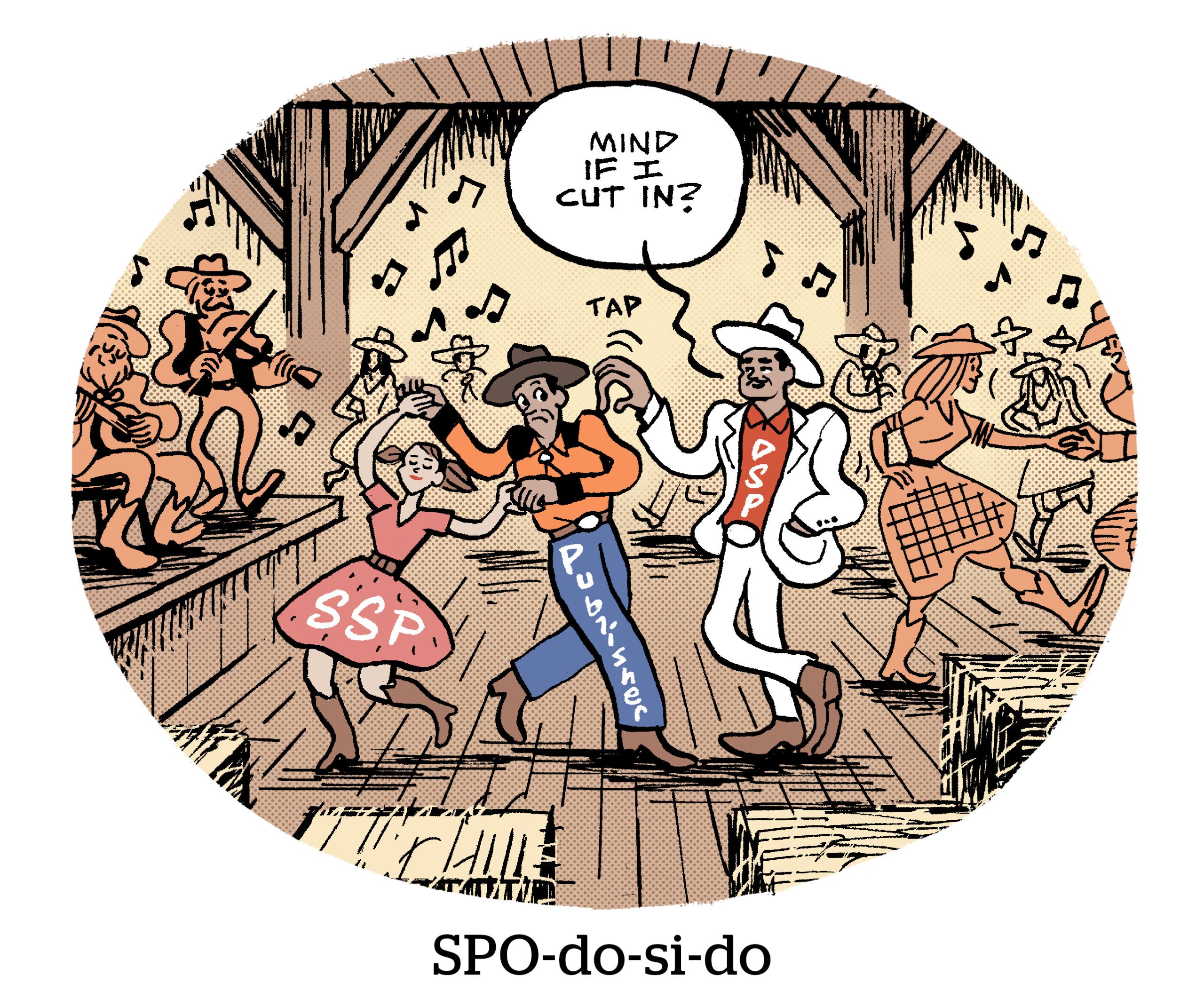
Improving transparency across the advertising ecosystem is an increasingly important objective for media owners and marketers. To advance toward this goal, buyers and sellers often promote supply-path optimization (SPO).
SPO is a tactic that eliminates the number of “hops” between buyers and sellers within digital advertising. Sounds promising, yet without considering the whole picture, decision makers risk being penny wise and pound foolish.
Among the most frequent benefits touted with SPO is improved efficiency. When costs are reduced while maintaining effectiveness, greater return on ad spend is achieved.
But is it really that simple?
Exploring supply-path possibilities
Eliminating fees and middlemen sounds like a good idea. But practically, we know that no organization operates in a vacuum. Instead of thinking only about the shortest path, intelligent buyers and sellers are thinking about the smartest path in their supply-chain optimization.
For example, there are benefits to directly negotiating with solution providers, including efficiency and scale. Large publishers and walled gardens can offer marketers a single source line to more consumers. And retail media networks and large retailers can command large brand budgets due to their bundled pricing with distribution. However, many of these large providers face challenges that are addressed by working with multiple solution providers.
A large sports publisher can easily attract sports advertisers, but without audience enrichment from other solution providers, it would be more challenging to attract auto, finance and travel advertisers. Audience enrichment providers can help attract additional demand from more marketers who aren’t endemic to the context surrounding ad inventory, driving up publishers’ auction density, fill and yield.
Given the relative scarcity of in-market audiences within each media owner’s own property, media sellers also benefit from the ability to extend their first-party data across the ad inventory of multiple media owners. Moreover, marketers benefit from the improved ability to control frequency of ad exposures across these publishers.
Buyers also receive benefits from direct negotiation. Large agencies can use their purchasing power to negotiate lower prices from publishers in exchange for fixed spend commitments. Media owners directly benefit from such deals, often executed via private marketplaces to better forecast their revenues.
The importance of interoperability
To achieve all these benefits, buyers and sellers require some common method of exchanging information. Enter interoperability.
“Interoperability” is a business-initiated exchange of information. In contrast to “data portability,” where consumers initiate the data exchange, the business controls the exchange with interoperability. This enables businesses to benefit from a competitive market of solution providers.
Sell-side providers help publishers extend their audiences across more ad inventory, attract demand from additional buyers and improve their yield. Buy-side providers help buyers enhance the efficiency and effectiveness of their media spend by connecting the outcomes generated from their spend to prior exposures across various publisher properties. This attribution process enables buyers to reduce waste and focus their limited budgets on the opportunities that drive incremental growth.
Interoperability is also a chief need for customers of customer data platforms and clean rooms. Even when both buyers and sellers rely on the same solution provider to process the data, each of their respective data sets require some common match key to generate incremental value.
The automation and real-time feedback from programmatic advertising enhances marketer effectiveness, ensuring marketers pay even more to publishers that drive greater outcomes. The inverse is also true.
The lack of interoperability drives increased media waste, lowering effectiveness and driving down the value marketers generate from their media spend. This negatively impacts publisher revenues. In 2019, Google quantified the impact on large publisher revenues at over 50% when interoperability is lacking. Last month, Google again published findings that impaired matchability can negatively impact marketer effectiveness and the correlated publisher revenues by double-digit percentages.
Smarter, not shorter paths
Given the significant benefits of interoperability, we should support open standards that enable buyers and sellers to benefit from improved transparency, efficiency and effectiveness across the digital ecosystem.
Instead of looking to merely eliminate solution providers, the better approach is to measure the value they provide and benefit from smart path optimization.
“The Sell Sider” is a column written by the sell side of the digital media community.
Follow InMarket and AdExchanger on LinkedIn.









